
How to Use ESP32 (30 pin): Examples, Pinouts, and Specs
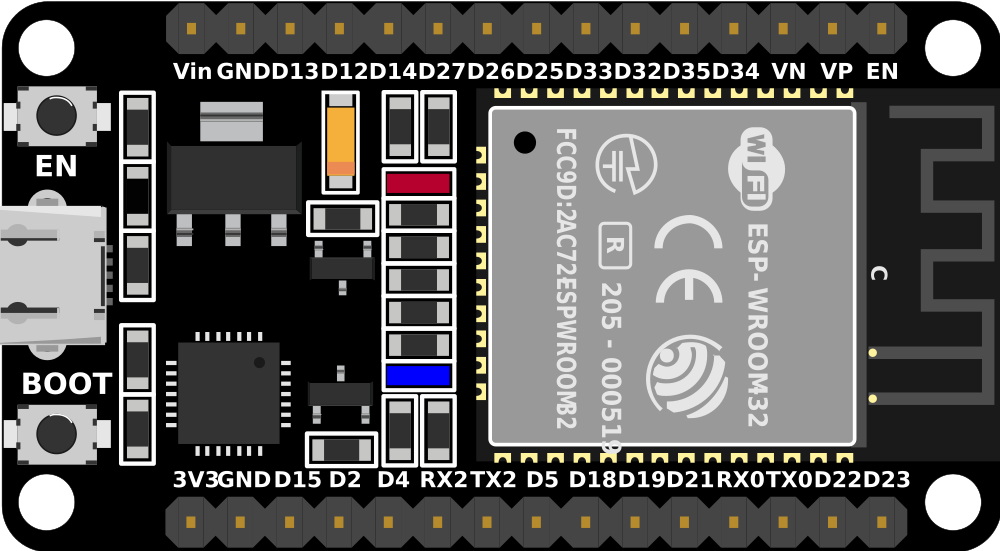
 Design with ESP32 (30 pin) in Cirkit Designer
Design with ESP32 (30 pin) in Cirkit DesignerIntroduction
The ESP32 (30 pin) is a powerful microcontroller designed for IoT and embedded system applications. It features built-in Wi-Fi and Bluetooth capabilities, making it an excellent choice for projects requiring wireless communication. With its 30 GPIO pins, the ESP32 offers a wide range of input/output functions, including ADC, DAC, PWM, I2C, SPI, UART, and more. Its versatility and high performance make it a popular choice among hobbyists and professionals alike.
Explore Projects Built with ESP32 (30 pin)
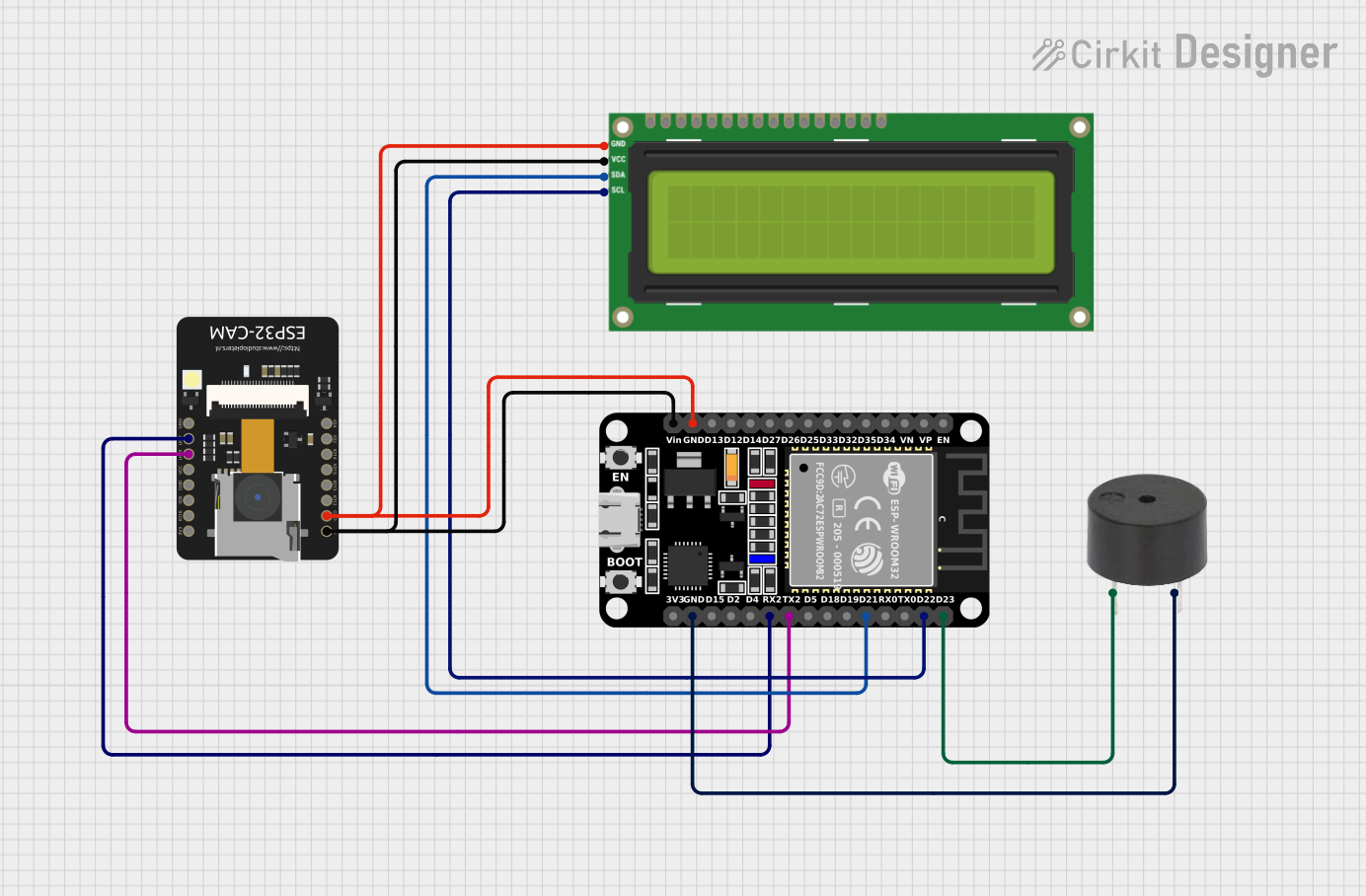
 Open Project in Cirkit Designer
Open Project in Cirkit Designer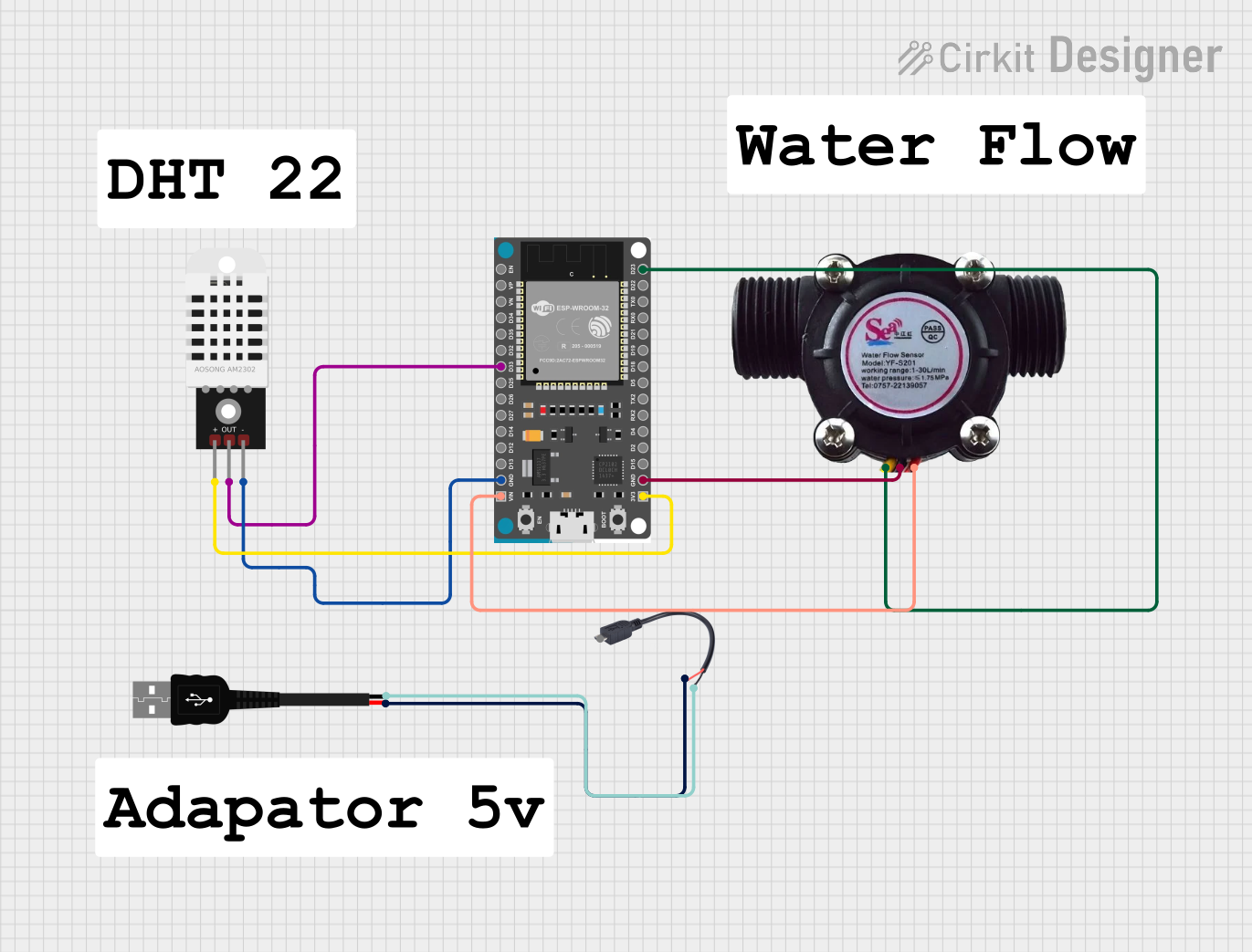
 Open Project in Cirkit Designer
Open Project in Cirkit Designer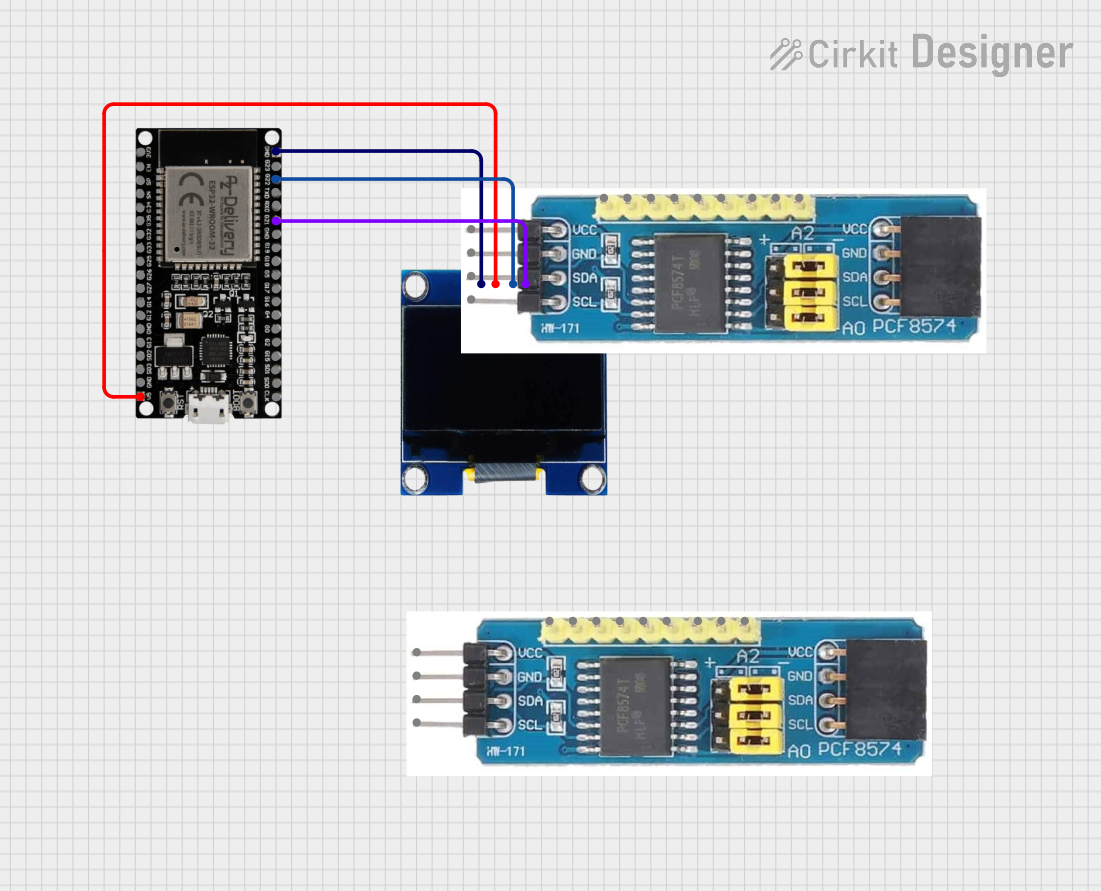
 Open Project in Cirkit Designer
Open Project in Cirkit Designer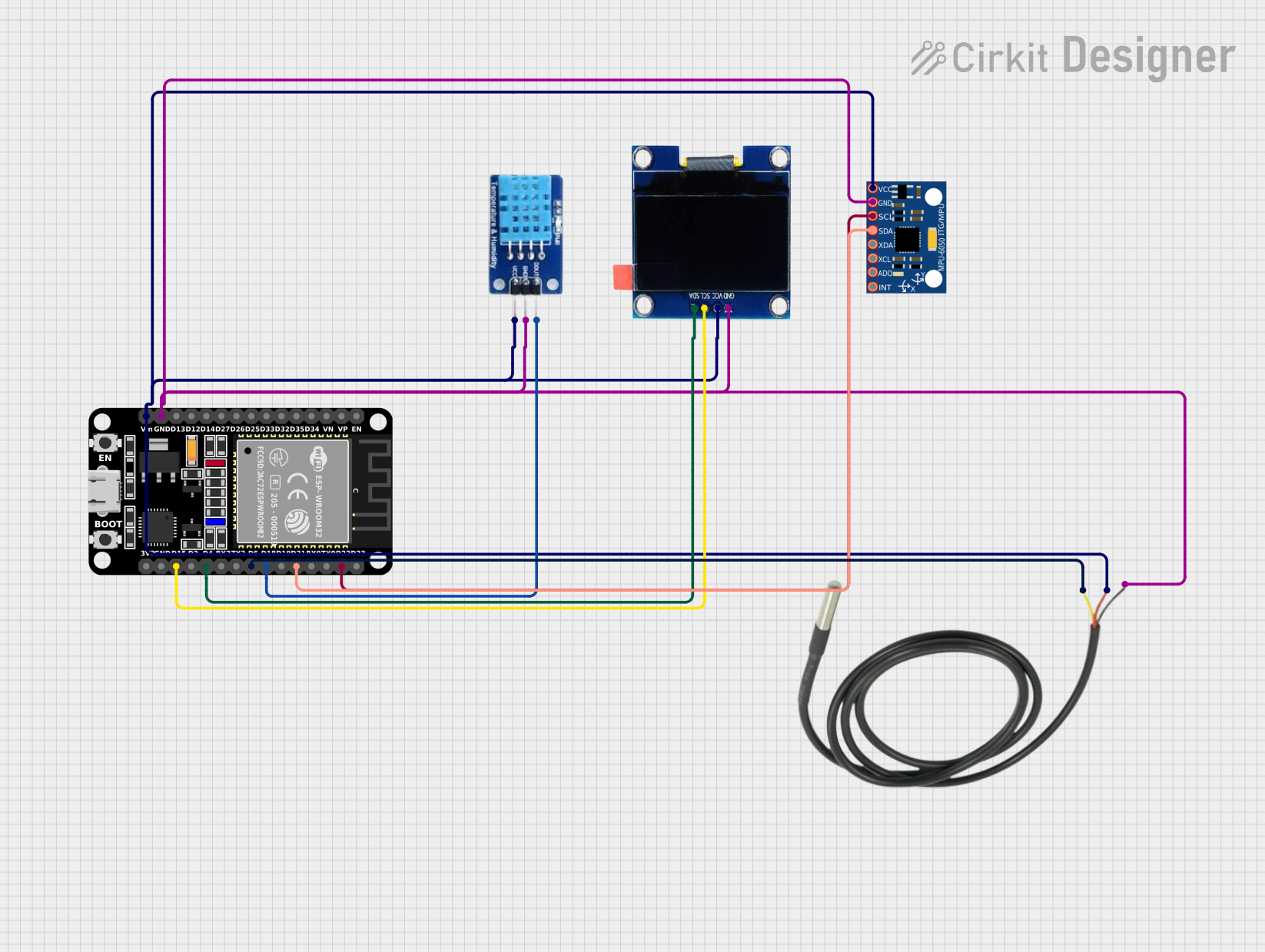
 Open Project in Cirkit Designer
Open Project in Cirkit DesignerExplore Projects Built with ESP32 (30 pin)

 Open Project in Cirkit Designer
Open Project in Cirkit Designer
 Open Project in Cirkit Designer
Open Project in Cirkit Designer
 Open Project in Cirkit Designer
Open Project in Cirkit Designer
 Open Project in Cirkit Designer
Open Project in Cirkit DesignerCommon Applications and Use Cases
- IoT devices and smart home automation
- Wireless sensor networks
- Wearable technology
- Robotics and automation systems
- Data logging and remote monitoring
- Prototyping and educational projects
Technical Specifications
Key Technical Details
- Microcontroller: Tensilica Xtensa LX6 dual-core (or single-core) processor
- Clock Speed: Up to 240 MHz
- Flash Memory: 4 MB (varies by model)
- SRAM: 520 KB
- Wi-Fi: 802.11 b/g/n
- Bluetooth: v4.2 BR/EDR and BLE
- Operating Voltage: 3.3V
- Input Voltage Range: 5V (via USB) or 7-12V (via VIN pin)
- GPIO Pins: 30 (multipurpose, including ADC, DAC, PWM, etc.)
- ADC Resolution: 12-bit
- DAC Resolution: 8-bit
- Communication Protocols: UART, SPI, I2C, I2S, CAN, Ethernet
- Power Consumption: Ultra-low power consumption in deep sleep mode (~10 µA)
Pin Configuration and Descriptions
The ESP32 (30 pin) has the following pinout:
| Pin Name | Function | Description |
|---|---|---|
| VIN | Power Input | Input voltage (7-12V) for powering the ESP32. |
| GND | Ground | Ground connection. |
| 3V3 | Power Output | Provides 3.3V output for external components. |
| EN | Enable | Enables or disables the chip (active high). |
| IO0 | GPIO0 / Boot Mode | General-purpose I/O pin; used for boot mode selection during programming. |
| IO2 | GPIO2 | General-purpose I/O pin. |
| IO4 | GPIO4 | General-purpose I/O pin. |
| IO5 | GPIO5 | General-purpose I/O pin. |
| IO12 | GPIO12 / ADC2_CH5 / Touch5 | General-purpose I/O, ADC, or capacitive touch input. |
| IO13 | GPIO13 / ADC2_CH4 / Touch4 | General-purpose I/O, ADC, or capacitive touch input. |
| IO14 | GPIO14 / ADC2_CH6 / Touch6 | General-purpose I/O, ADC, or capacitive touch input. |
| IO15 | GPIO15 / ADC2_CH3 / Touch3 | General-purpose I/O, ADC, or capacitive touch input. |
| IO16 | GPIO16 | General-purpose I/O pin. |
| IO17 | GPIO17 | General-purpose I/O pin. |
| IO18 | GPIO18 / VSPI_CLK | General-purpose I/O or SPI clock pin. |
| IO19 | GPIO19 / VSPI_MISO | General-purpose I/O or SPI MISO pin. |
| IO21 | GPIO21 / I2C SDA | General-purpose I/O or I2C data pin. |
| IO22 | GPIO22 / I2C SCL | General-purpose I/O or I2C clock pin. |
| IO23 | GPIO23 / VSPI_MOSI | General-purpose I/O or SPI MOSI pin. |
| IO25 | GPIO25 / DAC1 / ADC2_CH8 | General-purpose I/O, DAC, or ADC input. |
| IO26 | GPIO26 / DAC2 / ADC2_CH9 | General-purpose I/O, DAC, or ADC input. |
| IO27 | GPIO27 / ADC2_CH7 / Touch7 | General-purpose I/O, ADC, or capacitive touch input. |
| IO32 | GPIO32 / ADC1_CH4 / Touch9 | General-purpose I/O, ADC, or capacitive touch input. |
| IO33 | GPIO33 / ADC1_CH5 / Touch8 | General-purpose I/O, ADC, or capacitive touch input. |
| IO34 | GPIO34 / ADC1_CH6 | Input-only pin, used for ADC. |
| IO35 | GPIO35 / ADC1_CH7 | Input-only pin, used for ADC. |
| RX0 | UART0 RX | UART0 receive pin. |
| TX0 | UART0 TX | UART0 transmit pin. |
| RST | Reset | Resets the microcontroller. |
Usage Instructions
How to Use the ESP32 in a Circuit
Powering the ESP32:
- Use the VIN pin to supply 7-12V, or connect a 5V USB cable to the micro-USB port.
- Ensure the 3.3V pin is used only for low-power external components.
Programming the ESP32:
- Install the ESP32 board package in the Arduino IDE.
- Connect the ESP32 to your computer via USB.
- Select the correct board and port in the Arduino IDE.
- Write and upload your code.
Connecting Peripherals:
- Use GPIO pins for digital input/output.
- Use ADC pins for analog input (0-3.3V).
- Use I2C, SPI, or UART pins for communication with sensors or other devices.
Important Considerations and Best Practices
- Voltage Levels: The ESP32 operates at 3.3V. Avoid applying 5V to GPIO pins to prevent damage.
- Boot Mode: Ensure GPIO0 is pulled low during programming.
- Power Supply: Use a stable power source to avoid unexpected resets or instability.
- Deep Sleep Mode: Use deep sleep to reduce power consumption in battery-powered applications.
Example Code for Arduino UNO
The following example demonstrates how to blink an LED connected to GPIO2:
// Blink an LED connected to GPIO2 on the ESP32
#define LED_PIN 2 // Define GPIO2 as the LED pin
void setup() {
pinMode(LED_PIN, OUTPUT); // Set GPIO2 as an output pin
}
void loop() {
digitalWrite(LED_PIN, HIGH); // Turn the LED on
delay(1000); // Wait for 1 second
digitalWrite(LED_PIN, LOW); // Turn the LED off
delay(1000); // Wait for 1 second
}
Troubleshooting and FAQs
Common Issues and Solutions
ESP32 Not Detected by Computer:
- Ensure the correct USB driver is installed (e.g., CP210x or CH340).
- Check the USB cable for data transfer capability (some cables are power-only).
Upload Fails with "Failed to Connect" Error:
- Hold the "BOOT" button on the ESP32 while uploading the code.
- Verify the correct board and port are selected in the Arduino IDE.
Unstable Behavior or Random Resets:
- Use a stable power supply with sufficient current (at least 500mA).
- Add capacitors to the power lines to filter noise.
Wi-Fi Connection Issues:
- Check the SSID and password in your code.
- Ensure the router is within range and supports 2.4 GHz Wi-Fi.
FAQs
Q: Can I use the ESP32 with 5V sensors?
A: Yes, but you need a level shifter to convert 5V signals to 3.3V.Q: How do I reset the ESP32?
A: Press the "RST" button on the board or toggle the EN pin.Q: Can the ESP32 run on batteries?
A: Yes, the ESP32 can run on batteries. Use deep sleep mode to conserve power.